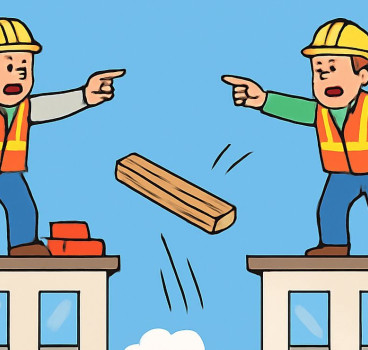Passive fire protection saves lives, assets and buildings
Architects' love of curtain wall cladding for its flexibility, durability and weather resistance has led to it being the external skin of choice for high-rise buildings across the globe. These external finishes are generally constructions of aluminium and glass, and whilst they are lightweight and durable, passive fire protection and preventing the spread of potentially life-threatening fire and smoke from one part of the construction to another can be quite a challenge.
Fires in high-rise buildings generate large quantities of smoke that tend to spread vertically throughout the building, even if the fire is contained to only one room.
When the gap at the perimeter edge between the floor and curtain wall is not properly sealed, flames and smoke will spread vertically to higher floors. Addressing these linear gaps by properly installing firestops maintains the floor's fire compartmentation of the building. This delays vertical smoke-spread and reduces the risk of smoke-related deaths in the upper floors of the building. The width of these gaps can be quite wide to accommodate service movement and other design parameters.
Sealing the gap
The perimeter barrier firestops seal the gap between the edge of the compartment floor slab and external curtain wall. Due to project designs and site tolerances, this linear gap can be variable and sometimes quite wide, therefore the firestop system used needs to have a degree of ‘dynamic' movement capability - compression and recovery - to accommodate serviceability movement. What is critical is the firestop system must do this in combination with the primary functional requirement, which is to maintain continuity of fire resistance between the compartment floor and the external wall. The installed firestop system needs to match the same period of fire resistance as the compartment floor.
All firestop systems need to be tested to two criteria – Integrity and Insulation (EI).
Integrity (E) refers to the ability of the system to prevent the passage of flame, smoke and combustible gases either through and around the material or through joints in an assembly; while Insulation (I) refers to a measure of the increase in conducted heat transferred from the exposed to unexposed surfaces of 180°C rise above ambient.
These two criteria are critical in the development of curtain wall perimeter firestop products. The most effective products combine a number of material features - density, thickness, resin content, fibre structure and controlled compression - which together determine the resistance properties.
When looking at the Integrity (E) criteria, the material chosen must be impervious to the transfer of flame and gases, easy to install with minimal site management and accommodate all real-world requirements at interfaces, joints and details.
In order to meet the fire and smoke stop requirements in all external façade applications, the Certifire-approved perimeter barrier and firestop systems offer an unrivalled combination of fully-qualified performance, practical installation and service benefits.The principal function of these systems is to maintain continuity of fire resistance by sealing the linear gap between the compartment floors or walls and external curtain walls both horizontally and vertically.
The systems offer tested fire rating options ranging from 60 minutes to five hours and can accommodate void widths up to 1200mm. In addition to providing an effective seal against the passage of smoke and fire, the products will also function as an effective acoustic barrier and plenum lining.
Designability
The firestop should be installed under compression and must have test evidence to show that it is capable of accommodating movement of a façade. It is imperative that the installed seal is able to function effectively with due regard to all designed movement serviceability limits. Curtain walling and cladding façade systems will deflect due to positive and negative wind loads as well as occupational live loads. These criteria are covered by EN 13116:2001.
Typically, a project may stipulate that the curtain walling system may have the following allowable deflection limits: Under the declared wind loads the maximum frontal deflection of the curtain walling's framing members shall not exceed L/200 or 15mm, whichever is less, when measured between the points of support or anchorage to the building's structure in compliance with EN 13116. (Extract from EN 138300) These factors may inevitably combine to preclude the suitability and therefore, use of certain systems e.g. high density material slab products.
Perimeter barriers must be installed to provide horizontal compartmentation at every floor level. Vertical cavity barriers should be provided as a minimum to fall in line with any compartment wall and more frequently if dictated by the fire strategy of the building.
Products should be fitted tightly around all bracketry to restrict the passage of smoke. Where there is potential for gaps, the product must be sealed with a sealant that carries the same fire insulation and integrity rating as the perimeter barrier. All installations should be in accordance with manufacturer's instructions, and where fixing brackets are required, these should be fitted and spaced in accordance with a certified fire test report.
Products used for fire safety installation should carry an independent third-party certification in order to ensure that the product supplied is the same as that tested.
The gap between the slab edge and façade is often a weak point acoustically. Any products used to improve the acoustic performance must not contribute to the fire load or inhibit the performance of the perimeter barrier.
Fire and smoke seal
At the $135 million Al Fattan Crystal Towers, recently completed at the Dubai Marina in the UAE, fire safety was paramount in a development which houses hotel rooms, suites and residential apartments.
With both vertical and horizontal fire compartmentation requirements, the specification of SIDERISE CW-FS 120 firestops provided the contractor, Cladtech, with a one-stop-shop solution that could maintain a fire and smoke seal in one product and could successfully fill linear gaps at the podium levels in excess of 300mm.
For the two towers, Cladtech installed 12,000 LM of SIDERISE CW-FS 120 firestops including horizontal (floor slab) and vertical compartmentation. With the timeline on the project critical, the use of this dry-fix system enabled the work to be completed quickly and efficiently, ready for handover to subcontractors. Throughout the application, SIDERISE provided comprehensive support including drawing assistance, liaison with the authorities for approval, installation training and periodic site inspection and assistance.
Whilst specifying the correct product is vital, the quality of installation is equally as important. Contractors installing lifesaving measures such as perimeter barriers and firestops must have adequate training on the particular manufacturer's products and be qualified to install it in the first place. When it comes to saving lives and protecting businesses and property, a well-designed and installed system can make the difference.
Visit www.siderise.com
Additional Blogs

Construction’s obsession with blame instead of learning
Construction is one of the most technically advanced industries in the built environment, yet culturally it often behaves like one of the least reflective. When things go wrong and they frequently...
Read moreHow risk Is routinely pushed down the supply chain
Risk is an unavoidable part of construction. Every project involves uncertainty around ground conditions, weather, design coordination, procurement, labour and programme. Yet while risk is inherent,...
Read more

What if Building Control went fully digital?
Building control governs structural integrity, fire protection, energy efficiency, accessibility and countless other aspects of design and construction. Historically, this process has been highly...
Read more